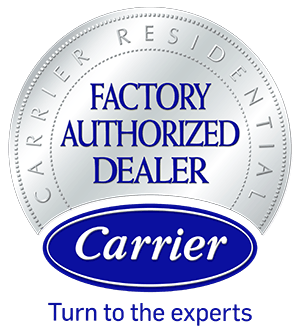Ensuring you’re cozy at home doesn’t just mean being able to sleep at night with ease or enjoy a great meal in your dining room. It could simply mean getting enough sunlight and breathing fresh air while in your home. However, as seasons change, the emergence of allergens, mold spores, and viruses–all of which can make people sick–is inevitable. This is one of the many reasons why air purifiers have become so popular. Running an air purifier is one of the most effective ways to minimize indoor air pollutants and prevent them from circulating in your home.
If you’ve been contemplating whether or not this is necessary, keep in mind that you’ll have to choose the approach that best suits your needs. In this article, your AC maintenance expert shares an overview of the differences between in-duct and whole-home air purifiers. Read further to learn more!
How Do They Differ?
A portable or in-duct air purifier filters the air in one room of your home. These purifiers are convenient because they just need to be plugged in to start cleaning the air in the room. However, while they’re more affordable compared to in-duct/whole-home systems, they won’t cover the entire area of your home.
AC repair experts would remind you that you’ll need to move the unit if you want to clean the air in other parts of your home, which can be tiring if the unit is heavy. Moreover, this kind of unit can also be noisy and take up valuable living space.
A portable air purifier is a stand-alone unit plugged into an electrical outlet for operation. Here are some of its advantages:
There are various price points available, from $16 up to $800. Hence, it’s cheaper to purchase than a whole-house air purification system.
It’s convenient – just plug it in and place it on a tabletop or in a corner to start cleaning the air.
Given its portability, it will provide you with fresher air wherever you move it.
It allows you to target air cleaning in specific rooms.
The disadvantages of portable air purification are:
Although it can provide some cleaning within a small room or confined space, the air will always be in danger of contamination because the rest of the house is still filled with dirty air.
It can only clean the air in one room.
It’s generally clearly audible due to its fan.
Some units are heavy and inconvenient to move from room to room as needed
It requires frequent cleaning and maintenance to perform optimally
On the other hand, a whole-home air purification system is installed directly in the ductwork of your ventilation system. This process is performed by a professional, and they can install it either before or after the air handler if your system has a central HVAC unit. While it may be a bit more expensive than a portable unit, a whole-home system offers much better long-term benefits for your home.
AC replacement technicians note that an air purifier can clean the air throughout your house and is installed into your HVAC system’s existing ductwork. The advantages of this are:
Every room in your house will have fewer air pollutants.
It’s backed by science. This is due to the UV-C light utilized in the air purification systems available. Its entire job is to target and eliminate harmful pollutants in the most effective format.
The air purification system is invisible because it’s discreetly installed into your home’s ductwork.
It makes little to no noise and needs only minor maintenance once installed.
With it, the HVAC system pumps the air with less effort. This smooth functioning leads to fewer breakdowns and longer system life.
The disadvantages of a whole-house air purifier are:
It’s more expensive than a portable air purifier.
Although the installation is usually quick, unlike with a portable unit, it has to be placed by an experienced professional.
Given these comparisons, it’s essential to ask yourself these questions before purchasing your system:
- Do I need an air purifier? Any AC maintenance expert would say indoor air quality is essential. Although it’s easy for people to assume that pollution is an outdoor issue, other pollutants and toxic dust and pollen can still enter your home and endanger your household. This is the main reason why people buy air purifiers. An air purification system can help those with asthma and allergies be more at ease, as it’s programmed to ensure the air is clear of bacteria. This system is also ideal if you smoke inside your house or if your community has significant pollution problems.
- What size do I need? Remember that bigger isn’t always better. A rate of four air changes per hour will ensure that the air purifier thoroughly filters out as many microscopic symptom-triggering allergens as possible to keep you breathing easy.
- What features does my purifier need? Never settle for less. Remember that functionality and durability are a must. You may look for a Wi-Fi-operated air purifier so you can easily control it with your phone. It can also have air quality indicators to provide you with updates on air quality. Moreover, take the time to shop around to ensure that your next purchase has the Energy Star label. This way, you can save more money while conserving energy.
- What makes a good air purifier? AC repair experts say many factors make a great air purification system, but these are some of the features that are ideal for most homeowners:
a. Air quality sensors. These sensors monitor the air for specific pollutants and automatically adjust the air cleaner to the level needed to remove these particles quickly
b. Digital controls. These allow more precise air quality control settings than a rotary dial or push-button design.
c. Mobile application. This allows you to fully control every aspect of the air purifier from your mobile device. Some apps also include air quality monitoring data, so you can see in real-time how dirty or clean the air is inside your home.
d. Programmable timer. This automatically shuts off the device after a specific interval of 2, 4, or 8 hours. This feature helps save energy and keeps the device from running continually when you’re away from home.
e. Remote control. This allows you to control the machine from a distance.
If you need an emergency AC replacement, Cool Zone Air Conditioning & Heating is always ready to provide 24/7 HVAC service, with all our trucks fully stocked with parts to ensure we can attend to your needs as quickly as possible.
To learn more about what Cool Zone Air Conditioning & Heating can do for your home or business, just give us a call at (623) 322-0933. You may also request an appointment with one of our HVAC experts by filling out our online form. Get in touch with us today!


